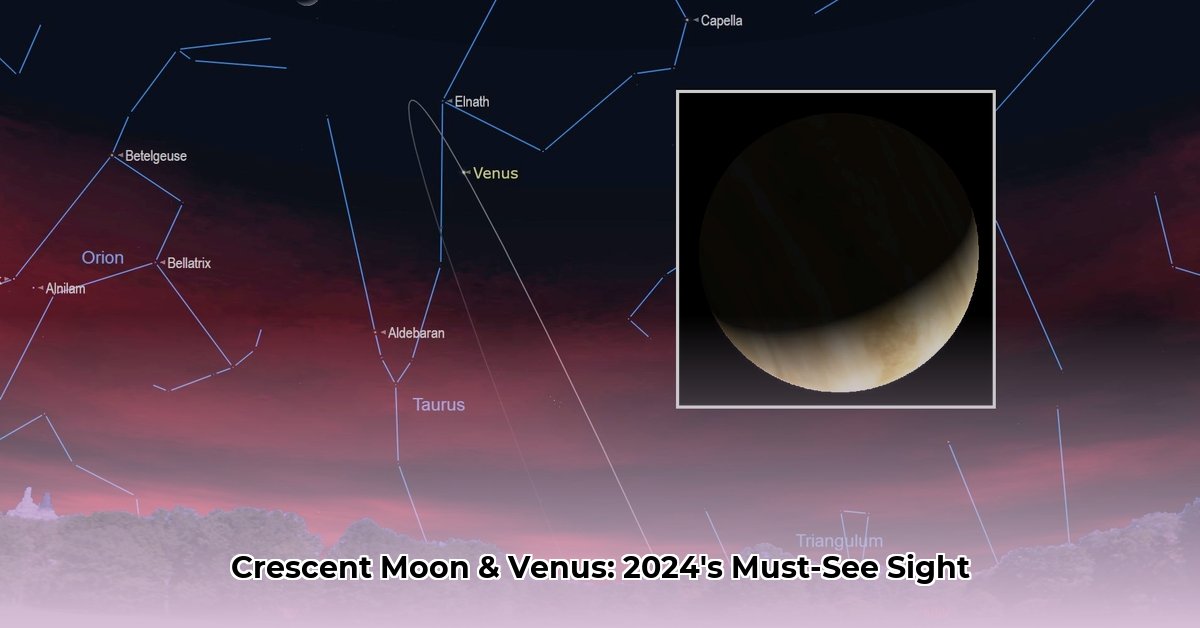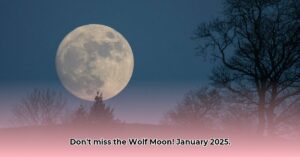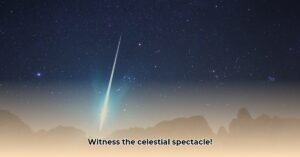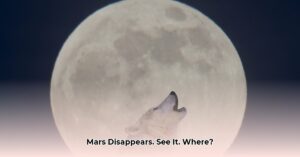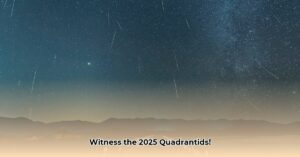Want to witness a celestial tango? The crescent Moon and Venus, two of the night sky’s brightest gems, regularly grace us with a close encounter. This isn’t a random cosmic accident; it’s the predictable choreography of their orbits. This guide is your VIP ticket to the best views of this stunning cosmic pairing. Whether you’re a seasoned stargazer or just beginning to explore the cosmos, we’ll equip you with everything you need to know.
Pinpointing the Perfect Viewing Time
The Moon waltzes around Earth roughly every month, while Venus gracefully orbits the Sun. These distinct orbital paths mean that the Moon and Venus sometimes appear close together from our perspective—an event astronomers call a conjunction. The prime time to witness this celestial meeting is during twilight, either shortly after sunset or just before sunrise. This is the sweet spot when the sky is dark enough for Venus to shine brightly, yet still touched by the Sun’s fading light.
The exact timing of this celestial duet varies each month and depends on your location. These tools will help you find the perfect moment:
- TimeandDate.com: https://www.timeanddate.com/ This website provides accurate sunrise and sunset times for your location and details about specific celestial events, including Moon-Venus conjunctions.
- Stellarium: https://stellarium.org/ This free planetarium software offers a realistic simulation of the night sky. Input your location and date, and it shows precisely where and when to find the Moon and Venus.
- In-The-Sky.org: https://in-the-sky.org/ Another excellent online resource that provides customized stargazing information based on your location, including conjunction predictions.
- Local Astronomy Clubs: Connecting with a local astronomy club offers invaluable, region-specific advice from seasoned sky watchers. They often organize group stargazing events as well.
Maximizing Your Stargazing Experience
You’ve found the ideal viewing time—excellent! Now, let’s elevate your experience:
- Escape the City Lights: Light pollution is a stargazer’s nemesis. To fully appreciate the Moon and Venus, find a dark sky location. A nearby park or a rural area can work wonders.
- Let Your Eyes Adapt: Give your eyes at least 20 minutes to adjust to the darkness. This will allow you to see fainter objects in the sky.
- Enhance Your View: Binoculars can dramatically improve your view, revealing the crescent shape of Venus and the details of the Moon’s surface. A small telescope can further magnify this cosmic pairing.
- Check the Weather: Cloud cover can obscure your view. Check the forecast and choose a clear night for optimal viewing.
2024 Crescent Moon & Venus Conjunction Dates (Examples)
| Location | Date (Approximate) | Time (Approximate) | Sky Direction |
|---|---|---|---|
| New York City | January 23 | Early Evening | West-Southwest |
| Los Angeles | January 22 | Early Evening | West-Southwest |
| London | January 24 | Early Evening | West-Southwest |
- Important: These are examples. Consult a reliable astronomy resource for precise dates and times specific to your location.*
Understanding the Cosmic Dance
Why does this conjunction occur? The Moon orbits Earth much faster than Venus orbits the Sun. As the Moon zips around us, it periodically appears close to Venus from our vantage point, creating this beautiful celestial alignment. While they look close together in the sky, they are still separated by vast distances in space. It’s all a matter of perspective!
Beyond the Moon and Venus
While enjoying the Moon-Venus show, explore the surrounding sky. Can you spot other planets like Mars or Jupiter? Learning to identify constellations adds another dimension to your stargazing adventure.
Venus, like our Moon, goes through phases. It appears as a thin crescent at times and a full disc at others. This happens because Venus orbits the Sun inside Earth’s orbit. So, when observing the crescent Moon and Venus together, consider the intricate celestial mechanics at play.
Capturing the Cosmic Moment
A camera with a zoom lens can immortalize this cosmic encounter. Experiment with different settings to achieve the best results. Share your photos and inspire others to look up and appreciate the wonders of the universe!
Ongoing Research and Future Discoveries
While we can predict these conjunctions with good accuracy, ongoing astronomical research constantly refines our understanding of planetary movements. Future studies may reveal even more about the intricacies of these cosmic interactions.
By following this guide and embracing the wonder of the cosmos, you’ll be well-prepared to witness and appreciate the beautiful celestial dance of the crescent Moon and Venus.

